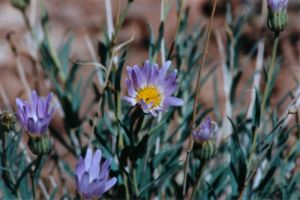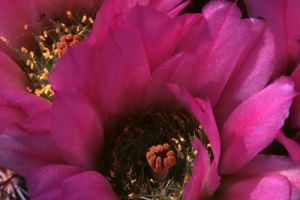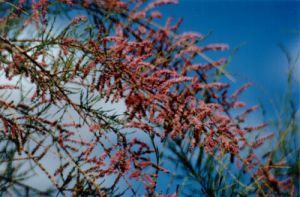 |

Themes : Flowers : Desert Flowers
Welcome to our desert wildflower page. Think desert and plants and the first thing that generally comes to mind is cactus. However, there is more to it than that. One of our reference books is "Canyon Country Wildflowers" by Damian Fagan. In it he talks about "microhabitats" that are:
Characterized by the dominant woody and herbaceous plants, but also by alkalinity, moisture, and growing substrate...
By "growing substrate" we assume he means "dirt".
During the spring months when more moisture is present there are a number of different plants that bloom. This particular flower has been tentatively identified as a Utah Daisy, and is part of the Sunflower family.
Scientific name: Erigeron utahensis. The second portion of that name translates to "of utah", which makes sense given where we found it.
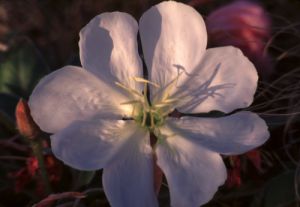 "Early Morning Dwarf Evening Primrose" La Sal Overlook - Arches NP, Utah Big Picture |
Some plants adapt to the desert conditions by blooming at specific times of day. For example, the Dwarf Evening Primrose (Oenothera caespitosa) will bloom late in the afternoon and stay open at night...
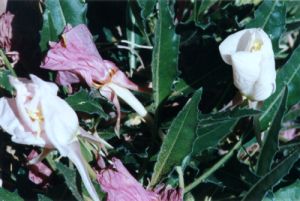 "Fading Dwarf Evening Primrose Blooms" Corona Arch Trail, Utah Big Picture |
... and then fade the next day. The blossoms fade to a pink color once they've been pollinated. This particular photo was taken in an alcove where water seeped out from the rock layers above.
Its scientific name Oenothera translates to "wine-scented" and refers to the use of this plant's roots in winemaking. The second portion caespitosa translates to "low-growing", which certainly describes how the plant looks.
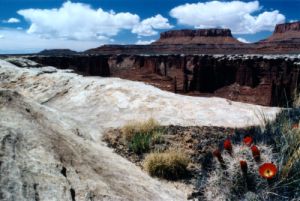 "Claret Cup Cactus and Monument Basin" White Rim Road - Canyonlands NP, Utah Big Picture |
This Claretcup cactus makes a nice foreground for Monument Basin, one of the stops along the White Rim Road. The Claretcup cactus is also called a Hedgehog cactus because of its shape. In fact, the scientific name Echinocereus triglochidiatus will loosely translate to "hedgehog with groups of three spines".
The Whipple's Fishhook is considered a "barrel" cactus. The needles are hooked at the tip, thus giving it the "fishhook" portion of its name. Its scientific name Sclerocactus whipplei is derived from the person that gave the cactus its name: Amiel Wicks Whipple. He was a topographical engineer that was the leader of the Pacific Railroad Survey on the 35th Parallel.
Apparently this cactus will occasionally have straight needles, which would not work all that well for fishhooks...
The Tamarisk or Salt Cedar is not native to the area. It was brought in as an attempt to stop the river banks from eroding. However, since it is not native, there are no diseases or predators to keep its growth in check. As a result, it is doing more than stopping erosion, it is taking over the river banks. It spread to Utah around 1880, and was found on the Colorado river around 1920. Today it is moving up the Green River canyon at approximately 12 miles per year, choking out the native trees and clogging the banks of the river.
As another undesirable side effect, the trees are very adept at taking water from the river and releasing it into the air, which accelerates the evaporation of the river water. This means that less water is available for irrigation or other uses further downstream.
Scientific name: Tamarix chinensis, derived from the Tamaris River in Spain and chinensis or "of China".
Thanks for visiting our tour of Utah wildflowers.
|
|








 Further Reading Further Reading "Canyon Country Wildflowers" "Canyon Country Wildflowers"
|

